 Yesterday, I touched on what information to put on a quilt label. Today I want to give you a short tutorial on an easy way to make a quilt label.
Yesterday, I touched on what information to put on a quilt label. Today I want to give you a short tutorial on an easy way to make a quilt label.
My absolute laziest way to make a quilt label is to just sign the quilt with my favorite fabric pen, the 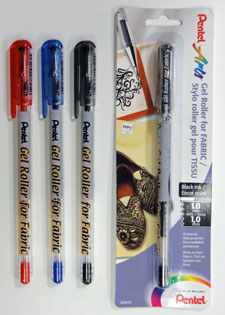 Pentel Gel Roller for Fabric. I’ve been know to just write directly onto the quilt backing. After many years of maintaining the Lost Quilt Come Home website, I would say that for identification purposes, it’s actually not a bad idea to do that anyway. I advise writing your name at the top of your quilt so that it is covered up by the quilt sleeve or possibly in the seam allowance under the binding. That way, if there was any dispute about who owns the quilt, you can reveal your own name.
Pentel Gel Roller for Fabric. I’ve been know to just write directly onto the quilt backing. After many years of maintaining the Lost Quilt Come Home website, I would say that for identification purposes, it’s actually not a bad idea to do that anyway. I advise writing your name at the top of your quilt so that it is covered up by the quilt sleeve or possibly in the seam allowance under the binding. That way, if there was any dispute about who owns the quilt, you can reveal your own name.
But, back to labels. If you’ve spent many, many hours laboring over a quilt, it really deserves a little more than a hastily scribbled name, don’t you think? Invest another hour and make a proper label.
I’m a Windows person, so I start in Word. You can use any similar program. I start by typing in the basic information I want: quilt name, my name, my city and state, the date completed, my contact information. Then I play around with various fonts, just because I like fun fonts and I like fiddling around with stuff like that. I usually copy the same information several times and use a different font on each one so I can see which I like best.
Once I decide on a font, I’m ready to save my document and print my label. Here’s a quick tutorial on how to print on fabric. There are many different products you can purchase online or at your local Joann Fabrics store. 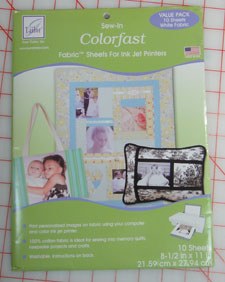 Typically, you can find letter-size sheets of white fabric that are mounted on paper, which you peel off after you’ve run it through your printer. Read the label. Some are washable where others are not. Most will be sew-in fabrics, but I think some are fusible. While these products are certainly convenient, they are typically fairly expensive. I like to keep a limited stash on hand, which I only buy with discount coupon to justify the expense in my mind. (I’m not particularly recommending this exact brand. Personally, I think the fabric is too canvas-like to suit my tastes, but I just wanted to give you a general idea of what to look for.)
Typically, you can find letter-size sheets of white fabric that are mounted on paper, which you peel off after you’ve run it through your printer. Read the label. Some are washable where others are not. Most will be sew-in fabrics, but I think some are fusible. While these products are certainly convenient, they are typically fairly expensive. I like to keep a limited stash on hand, which I only buy with discount coupon to justify the expense in my mind. (I’m not particularly recommending this exact brand. Personally, I think the fabric is too canvas-like to suit my tastes, but I just wanted to give you a general idea of what to look for.)
If you want to save some money, or if you would like to print on a different color of fabric, you can always iron the fabric of your choice to freezer paper. There are several different brands of freezer paper, too.
You can usually find rolls of Reynolds freezer paper in your neighborhood grocery store. Then you can just cut it to any size you want. The drawback is that it likes to curl. You can also buy freezer paper that is already cut to 8-1/2″ by 11″, which is perfect since that is what most printers take. As you can see in the photo above, the C. Jenkins brand is thicker, which I think makes it a bit easier to feed through my printer.
Now is a good time to mention that I am using an Epson printer that uses Durabrite ink. It is recommended by Gloria Hansen, the quilting/computer maven, because you can print directly on fabric without any pre-treatment, and it is permanent. If you use a different printer, you may have to pre-treat your fabric first. I’m not an expert, though. I defer to Gloria and gladly follow her recommendations since she really knows what she’s talking about.
1. Cut a piece of cotton fabric a little bigger than 8-1/2″ by 11″.
2. It helps to iron your fabric first.
3. Place the freezer paper on the fabric with the shiny side down.
4. Iron from the paper side with a hot setting and no steam. It works best if you have a firm surface. The typical ironing board is too squishy.
5. Flip it over and iron some more from the fabric side. Pay special attention to the corners and the end that will go through the printer first.
6. Cut the fabric to 8-1/2″ by 11″.
7. I like to cut it a tiny bit less than 8-1/2″ wide. You may also want to clip the corners. Many people find that it helps prevent printer jams.
8. Once you’ve finished ironing the freezer paper in place, it might curl toward the fabric side.
9. Sometimes I can correct that by ironing again on the paper side. Otherwise, I might carefully curl it backwards towards the paper side a bit so it will lay flatter.
10. Place the paper-backed fabric in your printer so it will print on the fabric side. For my printer, I place the fabric facing toward me. My printer seems to work better if I leave some additional paper in the printer, too.
11. Print your label. As I mentioned earlier, I use an Epson printer, so the pigment ink is permanent as soon as it is printed and I don’t have to heat set it or do anything else.
12. Trim to size. I like my label to fit on just half the sheet. Since my printer can print half sheets, I can use the extra on another label later.
13. Remove the freezer paper backing. It often comes off more easily if I make a tiny fold one corner first.
14. Peel the freezer paper away.
15. Press under 1/4″ on all four sides. I usually press the bottom first, then the two sides, and then the top. I think it gives the corners the cleanest appearance when I’m done.
16. Next, cut a piece of fusible webbing just a little smaller than the label and apply it to the back of the label.
17. Fuse the label in the lower right corner on the back of your quilt. Fusing the label in place makes it difficult to remove, which could be an extra measure of security in case your quilt is ever lost or stolen. Some people also like to add some quilting lines through the label to make it even more permanent.
18. Finish it off by slip-stitching the label in place. I don’t mind hand stitching, so I actually enjoy this last bit of time with my quilt before it is “all grown up.”
 You may have noticed that the label in the tutorial photos above is not the actual label for “Cabin Window.” That’s because I didn’t think of taking pictures when I was really doing it! But I hope you’ll see that it really isn’t that hard to make a nice looking, simple label, and I’m sure you’ll be glad you did in years to come.
You may have noticed that the label in the tutorial photos above is not the actual label for “Cabin Window.” That’s because I didn’t think of taking pictures when I was really doing it! But I hope you’ll see that it really isn’t that hard to make a nice looking, simple label, and I’m sure you’ll be glad you did in years to come.
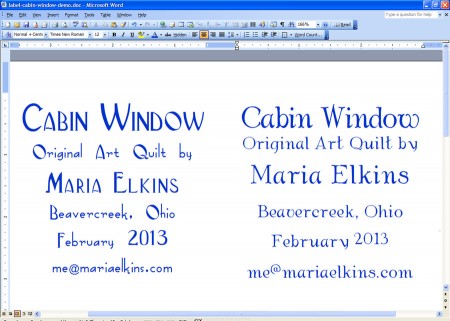

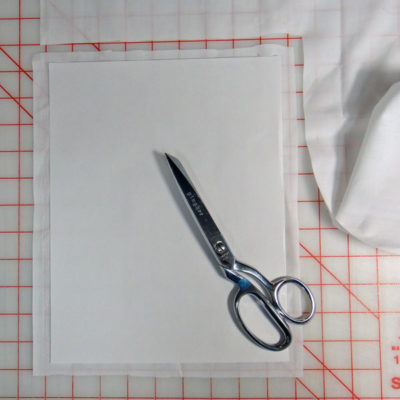

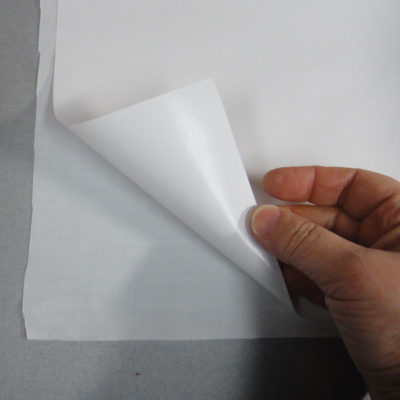

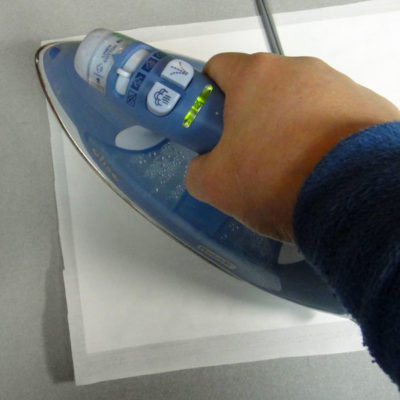

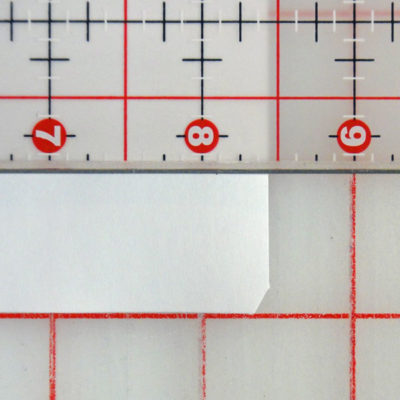
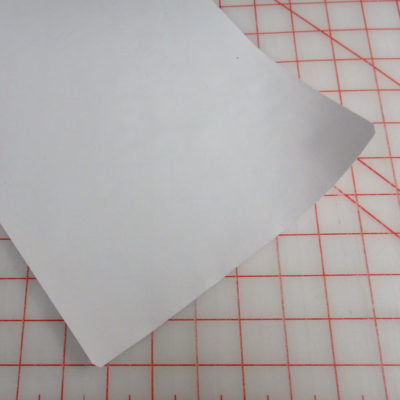
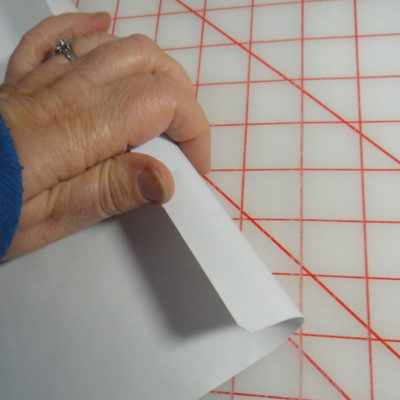
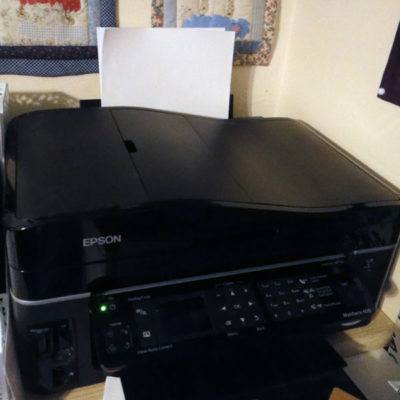
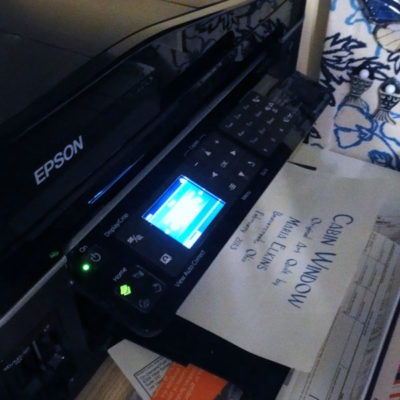
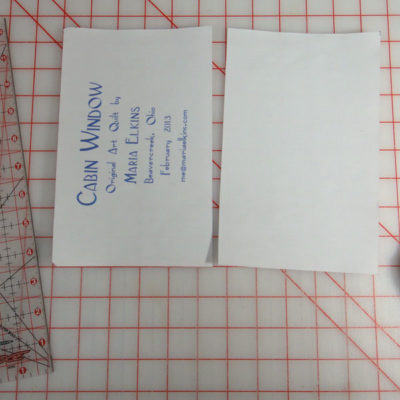
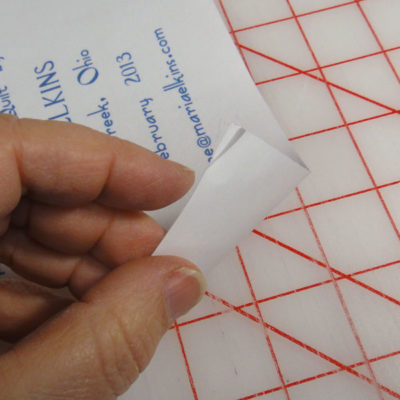
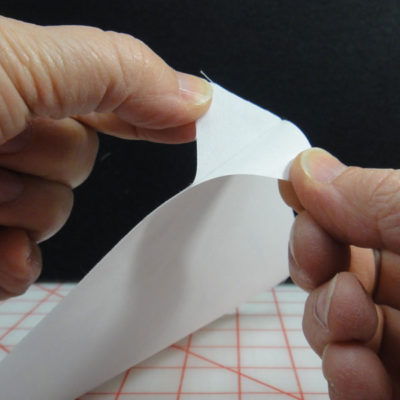

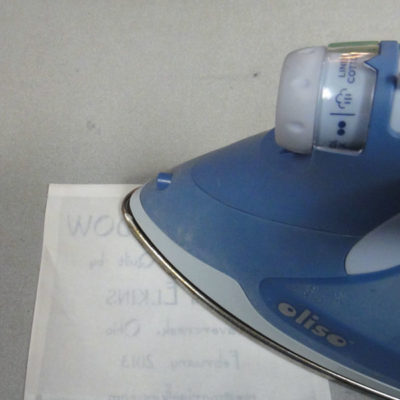
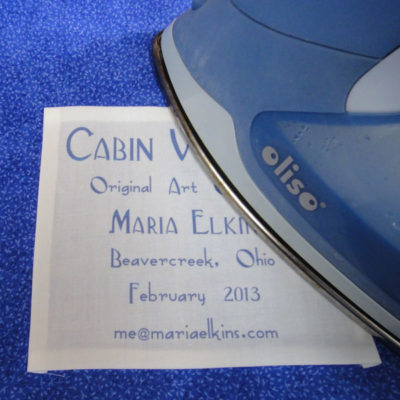
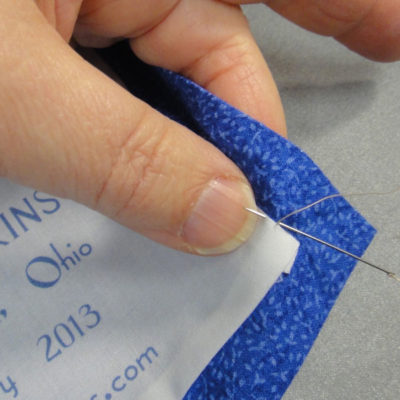
Comments
4 responses to “Tutorial: Computer printed labels”
Oh, and thanks for the tip about the pens – I’ve always used Pigma Micron. And I’ll have to try making my own printable fabric!! I do wonder, though, if there is something in/on the packaged sheets that helps to make the ink set when it is ironed…? Is there a product we should apply to the blank fabric when making our own??
Ann, I remember years ago, I always soaked my fabric in Bubble Jet Set first so the ink was permanent. I believe the prepared sheets that you can purchase are likely pre-treated with something so it will be permanent when using a printer with dye-based inks. However, based on Gloria Hansen’s recommendation I purchased an Epson printer that uses pigment-based inks, which are permanent even without pre-treating or heat-setting. I always use pre-washed, unstarched fabrics so there is nothing to interfere with the ink reaching the fibers, and I’ve had good results. That said, I am printing labels on quilts that are not washed regularly. I don’t know what repeated washing would do. My labels might get wet when I’m blocking my quilt, but I haven’t seen any adverse affects.
Thanks so much for the tutorial!! I can’t wait to give it a try!
Thanks, Maria…. Great tutorial!